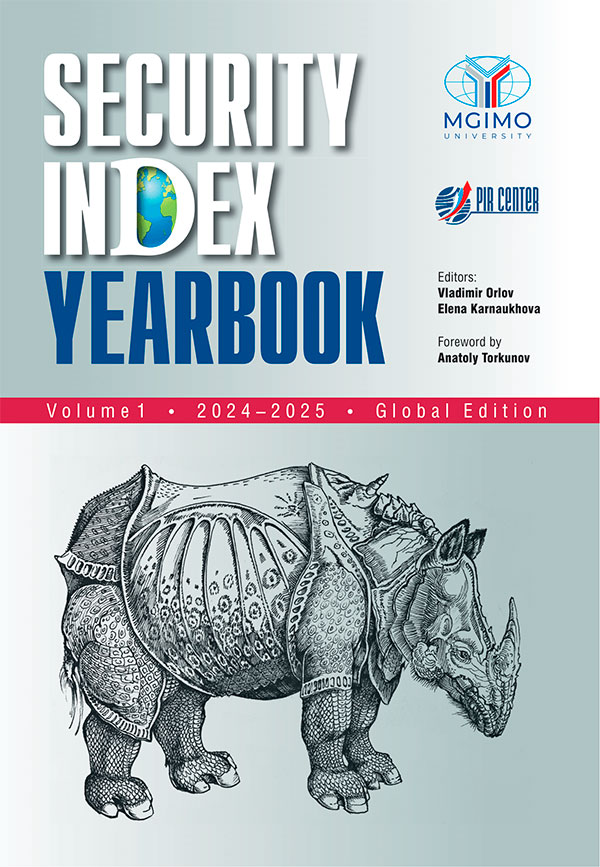... duty.
Nuclear deterrence can essentially be interpreted as a specific foreign policy tool—the threat to use nuclear weapons to prevent an adversary from implementing certain actions. The 2020 policy paper “Basic Principles of State Policy of the Russian Federation on Nuclear Deterrence”
spells out
the possible actions by other states that should be prevented through the capacity and readiness to launch a nuclear strike. First, is “the reception of reliable information on a launch of ballistic missiles attacking ...
Kiev is the most vulnerable party in any development of the situation—both radical and basic. The question is the price for all participants. The price for Ukraine will be the highest
Russia and the West are going through another stage of military-political escalation. Its immediate indicator was Ukraine’s use of American and British missile systems to strike Russian territory, the emergence of Moscow’s new nuclear doctrine, the ...
Russia’s leading experts on the new Russia’s nuclear doctrine
On November 19, 2024, Russian President Vladimir Putin
signed
Executive Order Approving the Basic Principles of State Policy of the Russian Federation on Nuclear Deterrence. The new nuclear doctrine incorporates the changes announced by Mr. Putin at a meeting on nuclear deterrence on September 25, 2024. What is the main difference between the new doctrine and the previous version? How can the new doctrine ...
... response to the Ukraine crisis alone
During a meeting of the Russian Security Council standing conference on nuclear deterrence on September 25, it was announced that changes would be made to the document titled “Basic Principles of State Policy of the Russian Federation on Nuclear Deterrence.” At the time of writing, the revised version of the document had not yet been signed into law by presidential decree, but this is expected to happen soon. Nevertheless, it is already possible to share some considerations on the upcoming ...
... Seoul, which established the Nuclear Consultative Group and approved (on the margins of the NATO summit) the Guidelines for Nuclear Deterrence and Nuclear Operations on the Korean Peninsula.
New coalition and alliance constructs resembling NATO are taking ... ... the notional Indo-Pacific region. At the same time, in the rhetoric and documents of the United States and some of its allies, Russia, China, Iran and the DPRK are increasingly often appearing in a bundle as a kind of “quartet of evil.” They (together ...
... Pentagon’s desire to create a broad regional missile defense infrastructure in Asia Pacific to meet the country’s unique nuclear deterrence needs [
5
]. Notably, no country of East Asia, in whole or in part, has ever expressed its intentions to unprovokedly ... ... bases, warships in East Asia and the high concentration of destruction capacity in the area of the Taiwan Strait, as well as Russia’s alleged deployment of missile weapons with an intermediate range of 3,500 to 5,500 km.
In the opinion of
some U.S....
... explicit mentioning of escalation concepts in official doctrines, there is understanding within Russia that conflict escalation can be inflicted through the ‘
application of calibrated damage
’. By placing an increased emphasis on ‘
strategic non-nuclear deterrence
’ since 2014, Russia has raised the threshold for nuclear use. That being said, while some of the Russian vehicles like the
Avangard
hypersonic glide vehicle and the sea- and land-based Tsirkon hypersonic missile are
explicitly designed for nuclear payloads
, other,...
... Belarus is to be completed by July 1.
Russian Gazette
25.03.2023.
https://rg.ru/2023/03/25/putin-rf-ne-peredaet-belarusi-iadernoe-oruzhie-a-delaet-to-chto-delalo-ssha-desiatiletie.html
(accessed 01.07.2023).
On the Foundations of State Policy of the Russian Federation in the Area of Nuclear Deterrence.
http://publication.pravo.gov.ru/Document/View/0001202006020040?index=2&rangeSize=1
(accessed 01.07.2023).
40
. Russian Foreign Ministry: NATO nuclear missions are not compatible with the Treaty on the Non-Proliferation of Nuclear ...
... of domestic experts on this document.
Andrey Baklitskiy, Consultant of the PIR Center, Research Fellow at the Diplomatic Academy of the Russian Foreign Ministry, RIAC Expert.
The Basic Principles have become the most detailed document consolidating Russia’s views on nuclear deterrence and the role of nuclear weapons in ensuring national security. This is a welcome development. Moreover, Russia finally presented a coherent and plausible strategy for the use of nuclear weapons, announcing that any aggression against ...
... introducing the notion of “strategic non-nuclear deterrence” that had previously been absent.
Let us note that this latter step was taken at the peak of the military and political crisis between Russia and the West, in the second half of 2014. If Russia had indeed relied on the irrationally incommensurate nuclear deterrence of the West and, in accordance with the classical “madman theory,” had wished to convince the West of this, there would have been no obstacles in the way of Russia enshrining such deterrence officially. Instead, Russia demonstratively ...



